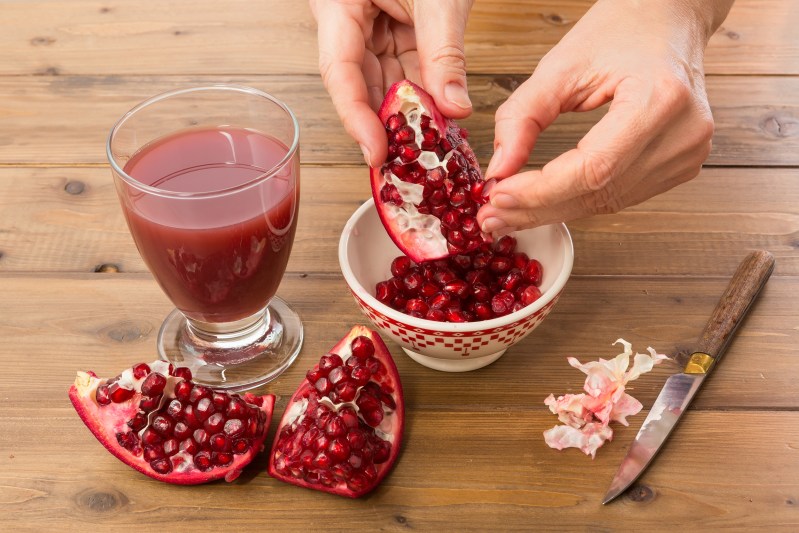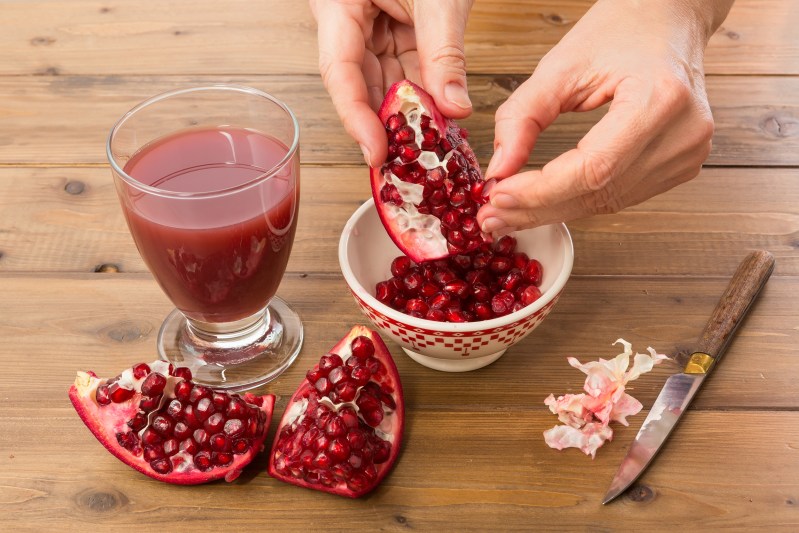Underneath that tough exterior, Pomegranates are one of the sweetest and nutritious fruits. Behind that red shell, it’s packed with antioxidants and filled with little jewels of sweet-tasting juice wrapped around tiny seeds. Getting into a pomegranate, however? Not so sweet. It can be a slightly messy, stainy situation with more stress than the return on investment. However, with a sharp knife and a little understanding of how the fruit works, you can cut a pomegranate with our losing your seeds and your marbles.
Related Guides
What is the best way to cut a pomegranate?

Cutting straight through a pomegranate like an apple is possible, but you waste a lot of the fruit in the process. Instead, here’s what you do.
- Take a sharp knife and cut off a slice at the top of the pomegranate where the stem falls.
- Take a look at the fruit. You should be able to see natural sections where the seeds divide. If you can’t, cut another thin slice from the top until you find the natural sectioning.
- Start with the first section. Moving your knife from the cut piece to the bottom, slice on the fruit’s fiber between seed sections.
- Repeat for each section until you’ve scored the fruit.
- Take your fingers and gently peel the sections apart until you have wedges full of seeds.
- If you’re serving yourself — you can eat the seeds right off the sections or pick them off one by one.
- If you’re serving others — leave the wedges for a big impact, or place the section in a bowl of water. As you gently peel off the seeds, they’ll float to the top making collection easy.
Now you can serve the pomegranate on your best wooden cutting board and make it look easy.
Tips to cutting a pomegranate

Take your time: Start with cutting the top of the pomegranate to reveal the sections. This will help you see where to cut and you’ll be able to pull each section away with minimal mess or waste.
Use a sharp knife: Starting with a small, very sharp knife is the best, this gives you more control over the cutting.
Don’t cut in half: While you can cut the fruit straight down the middle, it will be messy — quick, but very messy, and it’ll be difficult to get the seeds out.
Can you peel a pomegranate?
Peeling a pomegranate isn’t a thing. The skin is too tough, and there isn’t “fruit” in the middle, per se. The seeds carry all the flavor, so you’ll need to pull the fruit apart to get to them. Peeling or cutting away the exterior only reveals the outermost seeds — not a very good use of your time.



